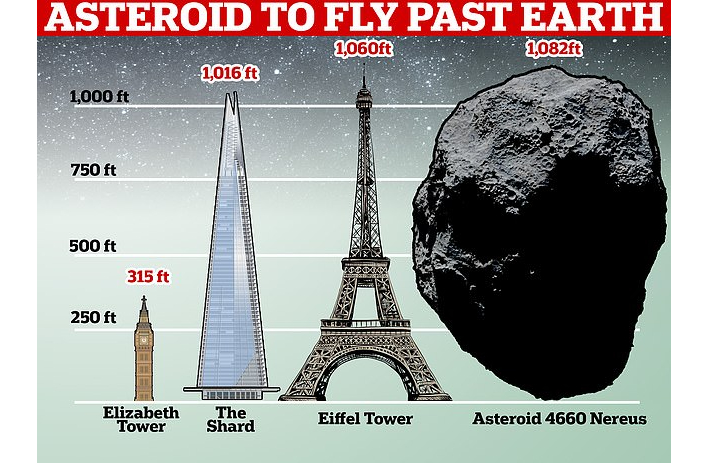
You might have heard the buzz about an asteroid called 4660 Nereus, coming closest to Earth on Saturday, December 11, 2021. Close is a relative term. The 1,083-foot (330-meter) asteroid will come within 2.4 million miles (3.9 million km) of Earth, still about 10 times farther away than the moon. It’ll swing closest at approximately 13:51 UTC (8:51 a.m. EST; translate UTC to your time). The Minor Planet Center classifies 4660 Nereus as a Potentially Hazardous Object. Potentially hazardous doesn’t mean the asteroid is on a collision course with Earth. That’s just the label for objects that come within 19.5 times the moon’s distance and are larger than about 460 feet (140 m). So Nereus fits the bill.
This asteroid makes close approaches to Earth several times each century. And – in part because it comes close and in part because it’s a relatively slow asteroid – space entrepreneurs have cast their gaze toward Nereus as well. By some reports, the space rock is worth an estimated $5 billion in precious metals.
Nereus completes an orbit around the sun every 661 days (1.81 Earth-years). Saturday’s close pass of about 10 lunar-distances will be its closest until 2060, when Nereus will pass at only three lunar-distances. It will not be visible to the eye. Will you see it? Only if you have at least an 8-inch (20-cm) telescope, or larger. See the charts below.
EarthSky 2022 lunar calendars now available! They make great gifts. Order now. Going fast!
Video of asteroid Nereus
Astronomer Alessandro Marchini emailed EarthSky to say that his group at the University of Siena spent some time this week observing asteroid 4660 Nereus. He called it “a very interesting object” and said:
Asteroids are one of the research fields of our observatory: analyzing their changes in brightness over time, we can estimate their shape and their rotation period.
I made a time-lapse video with the images collected with our telescope in more than 3 hours on December 7, with the rush among the stars of the asteroid Nereus.
You can see Alessandro’s video below:
Space entrepreneurs are eyeing it
Asteroid Nereus is an elongated rock that travels at 14,719 miles per hour (23,688 km/h). While this may sound like a huge speed, Nereus is in fact a “slow” space rock compared to many other asteroids. That relatively low speed is an advantage for those who want send a robotic spacecraft in the future to study it. That is, its slow speed means a spacecraft can rendezvous with the asteroid more easily. In 2009, space scientists considered Nereus “a strong candidate for a rendezvous mission.” It would take about a year for a robotic spacecraft to enter orbit around Nereus.
And space entrepreneurs are eyeing Nereus as well, for the same reason, because of its slow speed relative to other asteroids. The Hill reported on December 1:
Asterank, a database that monitors more than 600,000 asteroids, estimates that Nereus’ value is at $4.71 billion, making it one of the most cost-effective asteroids to leverage for mineral resources. The asteroid is thought to contain billions worth of nickel, iron and cobalt.
Asteroid mining is a concept that began to gain popularity in the early 2010s, but now as the commercial space industry has taken off with big players like Blue Origin and SpaceX, it could pick back up again starting with Nereus.
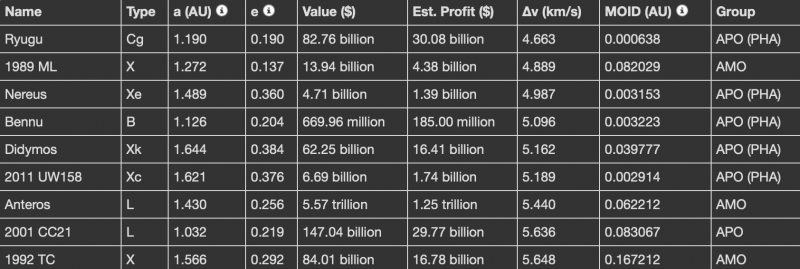
Astronomers are studying it, too
In 2002, the space rock made a similar approach to Earth which enabled scientists to study its shape and size using radar. Using the Arecibo Observatory and the Goldstone Antenna at California, astronomers sent radio signals that allowed them to obtain very good radar images. However, since this week’s approach is slightly closer than the previous ones, scientists might detect some surface features that were not visible in 2002.
This closer approach might also reveal if the asteroid has a “moon” orbiting around it, as many asteroids do. Bad luck, though. Astronomers say the iconic Arecibo Observatory in Puerto Rico was the best tool for detecting a “moon” or secondary space rock. And, as you might have heard, Arecibo collapsed and was decommissioned last year.
But astronomers are already studying asteroid Nereus during this flyby, with other earthly observing tools. Radar observations from Goldstone started on November 22. They’re expected to continue for about 2-3 weeks.

Will you see it?
Saturday’s close pass of this asteroid will not be visible to eye alone. Asteroid 4660 Nereus will reach a visual magnitude around 12. That’s far too faint to see with the unaided eye.
What would it look like if you could see it? Remember, the word asteroid means star-like. Through earthly telescopes, asteroids look like stars. But, because they’re close to us, they are moving stars. An amateur astronomer wanting to observe Nereus would point a telescope at the correct location and time. Then they’d carefully observe the stars in the field of view. And then they’d compare the view 15 or 20 minutes later to try to detect an apparent “star” that had changed position. The moving “star” will be asteroid Nereus. A long-exposure image would be an easier way to detect the space rock. On such photos, the asteroid will appear as a streak or line, because of its motion.
The charts below are for this weekend. To see Nereus, you would need at least an 8-inch (20-cm) telescope, or larger.
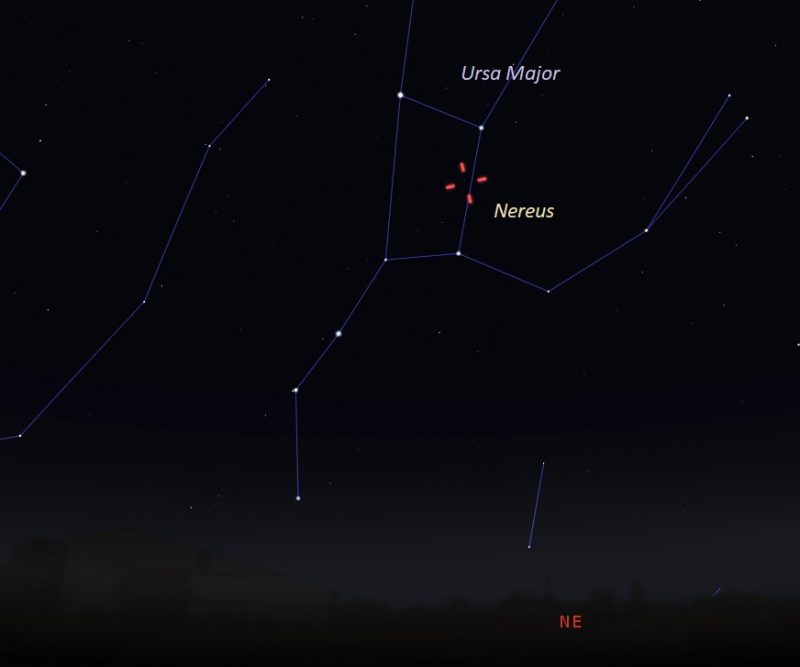


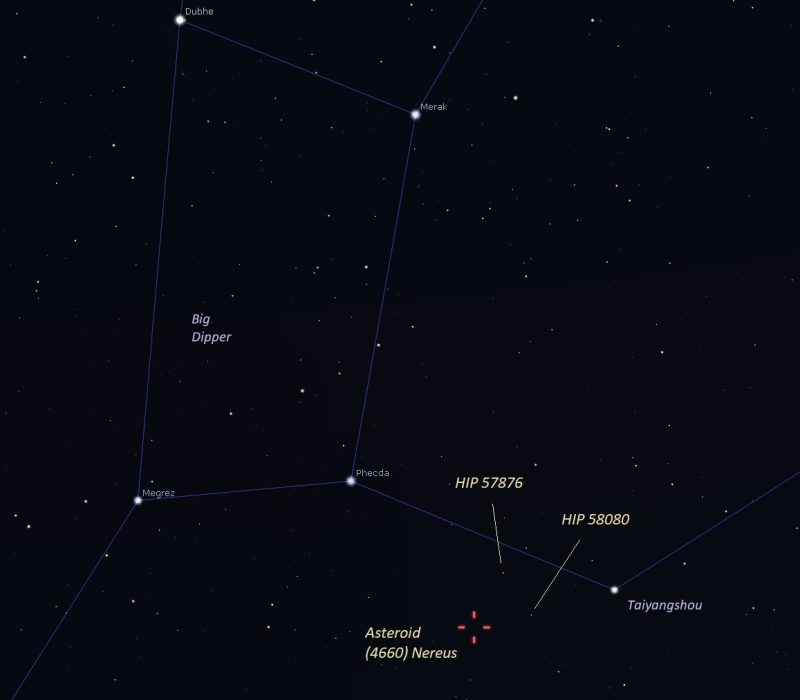
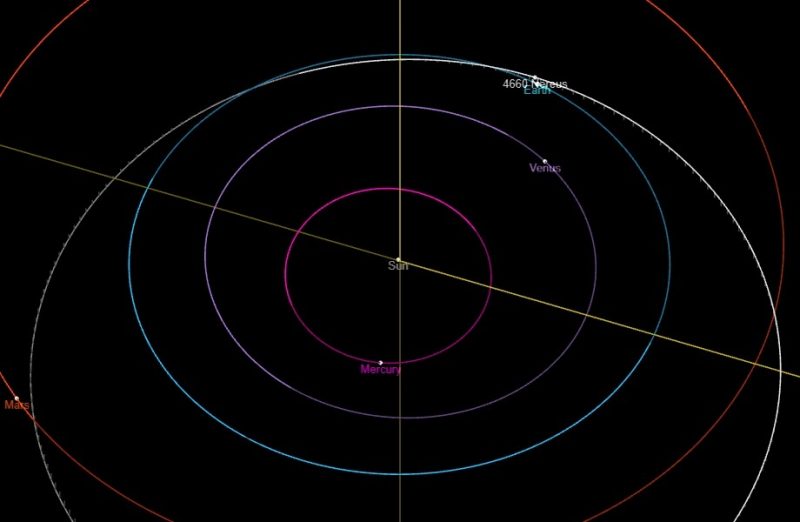
Bottom line: Asteroid Nereus will pass Earth at about 10 lunar distances (2.4 million miles, 3.9 million km) on Saturday, December 11, 2021.











